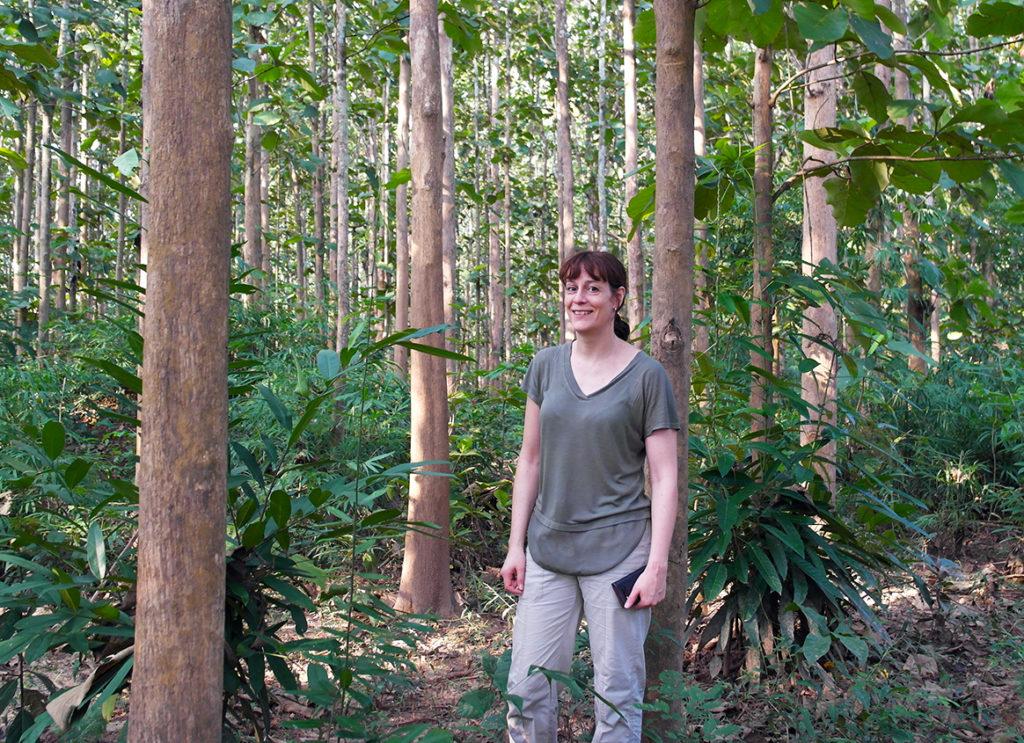May 20, 2020
Support to smallholder tree farming relieves the pressure on natural forests in Africa
On my last two trips to Eastern Africa before the travel restrictions I felt my throat choking and a grip in my stomach when looking at the scenery below from the airplane. It was not because of the turbulence but the anxiety about the shrinking, degraded forest patches and the smoke coming from the fires used for clearing land. My colleagues have written blog posts and articles about these disappearing African natural forests and about how the deforestation and wood deficiency could and should be addressed to tackle the climate change. Those challenges became, again, very concrete in front of my eyes.
Land use pressures in Sub-Saharan Africa are massive, and the root causes are the high population growth – roughly speaking the population will triple in the region by 2050 – and low agricultural productivity leading to a continuous need to clear more land for farming to feed the growing population. Land conflicts are not rare due to the conflicting aims of the government policies, complexities and deficiencies of tenure systems based on government formal ownership, colonial heritage, history of civil wars and traditional land tenure systems. Considering all this, how would it be even possible to allocate land for tree growing under these circumstances? This blog is an attempt to bring some hopeful sights to a situation which looks overwhelmingly impossible to solve.
Smallholder tree growing is on the rise but needs support

Luang Prabang province in Lao PDR has a long history of teak growing.
My heart has been beating for smallholder tree growing since my early days in the forestry studies. Rural people in the Global South often live in the most disadvantageous conditions and are too easily forgotten by their governments. I ended up doing a PhD about the topic, studying the ways how smallholder landowners have been able to engage in tree growing and what kind of environment allows and encourages them to do so. In fact, smallholder landowners in many Sub-Saharan countries are already responding to the growing wood demand and wood shortage by growing trees. Two critical conditions for them are demand and tenure – smallholders are ready to grasp the livelihood opportunity on a condition that they feel secure enough about their land tenure. One of my PhD research findings was that sometimes this is all that is needed if the demand for wood products is high, which has been the case for example in Tanzanian Southern Highlands.
Accurate data on smallholder tree growing area and its changes over the years is rarely available in the Global South, thus estimating the actual impact of support measures put in place to promote smallholder tree growing and comparisons between strategies is not easy. Some country examples may help to understand the poverty reduction potential though: in Tanzania, smallholders in the Southern Highlands region have established more than 150 000 hectares of pine plantations within ten-fifteen year. In Vietnam, the estimated smallholder plantation area is some 1.5 million hectares. An average tree growing area per family is usually small, some 1-2 hectares, thus the number of benefiting households is high. With incentives tailored to meet smallholder needs, governments or private sector partners can boost the tree growing interest to higher levels and increase its competitiveness against other land uses. Training and capacity building targeted for smallholders is another way to foster the activity. Many countries in Asia, e.g. Vietnam and China, have established a remarkable smallholder tree growing sector with promotional policies and specific support activities such as land allocation and loan schemes for tree growing.
Sharing the risks and increasing capacity
A smallholder-specific challenge in tree growing is their low risk-taking capacity. This leads to a preference to shorter rotation tree species as many species grown for timber take 15-25 years to mature, or to premature harvesting of their trees to get money for urgent needs. Therefore, smallholders’ common request for support is a mechanism which would allow them to get benefits from their investment before the final harvest through a loan system or a retainer contracts with buyers. So far, such arrangements are not widespread as banks, other potential financiers and the forestry companies usually consider the risk too high.
Another persistent problem among smallholder tree growers is their low level of technical skills and capacities, and poor access (and capacity to invest) in the technical inputs needed in tree growing, including improved seeds and seedlings. In most countries in the Global South, governmental budgets do not allocate enough resources to establish and run efficient support and extension programs for smallholder tree growers, barely even for agricultural services. In agricultural sector, so called outgrower contracts between private companies and producers are common but they are not quite as popular in tree growing for the abovementioned reasons. South African forestry companies have been the forerunners in outgrower schemes but gradually the interest is budding elsewhere in the continent. In many cases, outgrower programs have started as a corporate social responsibility activity but the pressures on land on densely populated areas are slowly turning outgrower programs to a real wood sourcing alternative. When well-managed, outgrowing programs generating cash for the communities help to increase acceptance of the tree growing and give rural people skills and means to diversify their livelihoods and accumulate wealth – and improve industries’ security of supply.
Forestry companies paving the way for professional development
There is a promising potential in smallholder tree growing as a way to decrease pressure on natural forest resources caused by the demand for wood products. Finnfund investee companies, for example New Forest Company, Kilombero Valley Teak Company, Green Resources and Miro Forestry are supporting communities and smallholders in their surrounding communities with seedlings, training and extension services to help them to reach professional level results and maximise their income from tree growing. Sometimes enthusiasm is so high that not all the willing outgrower program applicants can be taken on board. We invest in companies such as ETG to address the productivity challenges in the agricultural sector as well. Multisided problems such as climate change and deforestation require not only one but several proportionate medicines to be healed but where there’s a will, there’s a way.
Anne Arvola
Environmental and Social Adviser
To read more:
Woodland or forest?
Seminar notes: Sustainable development and climate action from African forests
Comments
Comments are closed.

An excellent undertaking to revive Agroforestry and improve farmers income.
Very successful projects to tackle climate change.Nigeria Is in need for such assistance.